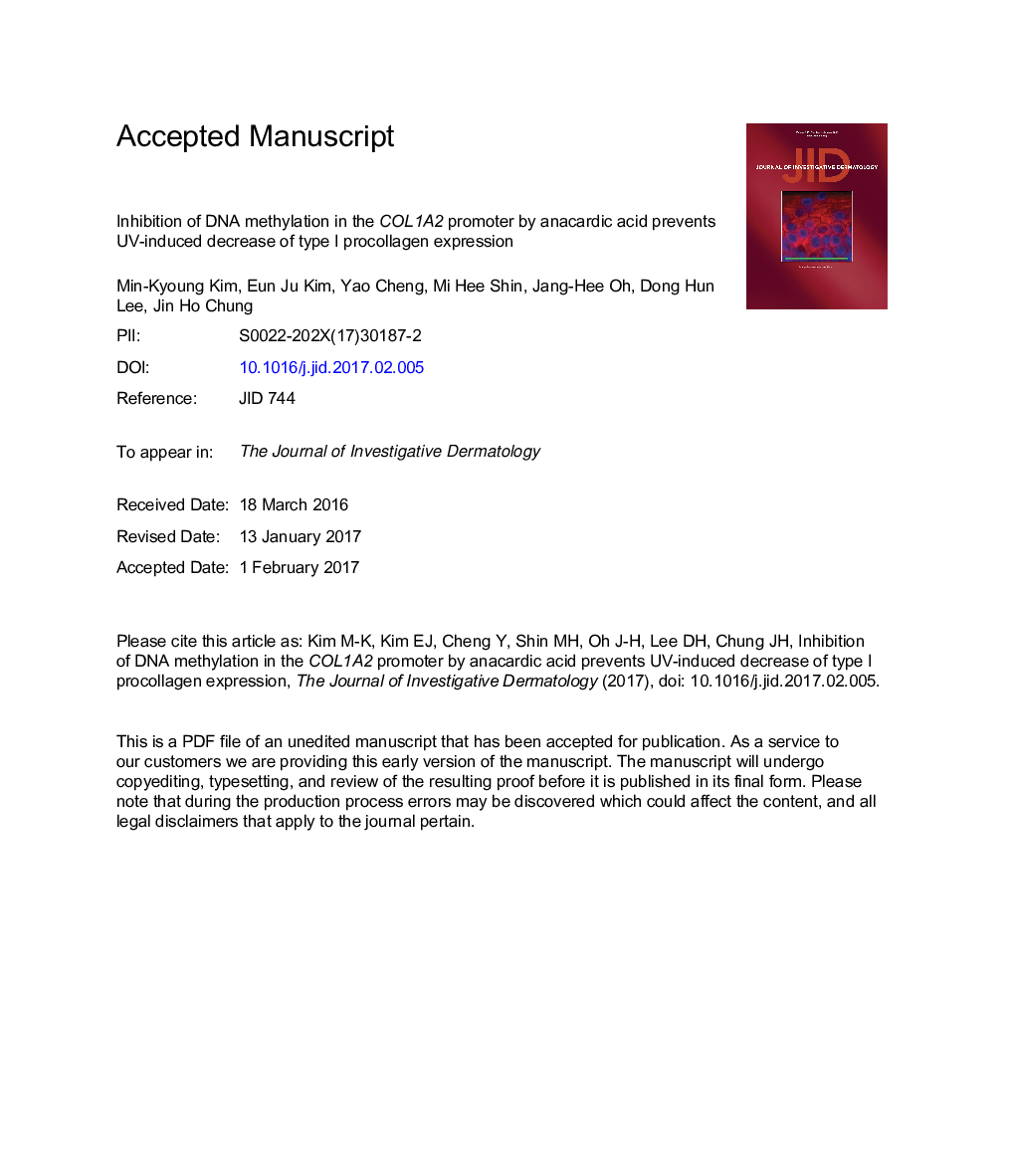| Article ID | Journal | Published Year | Pages | File Type |
|---|---|---|---|---|
| 5649424 | Journal of Investigative Dermatology | 2017 | 32 Pages |
Abstract
UV radiation decreases type I procollagen production mainly by inhibiting the transforming growth factor-β/Smad signaling pathway. Because further epigenetic regulatory mechanisms are unclear, we investigated the roles of DNA methylation and histone acetylation in UV-induced regulation of COL1A2 transcription in human dermal fibroblasts. Anacardic acid, a p300 histone acetyltransferase inhibitor, rescued the UV-induced decrease of type I procollagen expression in human dermal fibroblasts. Although UV irradiation induced global histone acetylation, it reduced the local recruitment of histone H3 acetylation as well as p300, and Smad2/3 to the p300 binding site (-1406/-1393), in the COL1A2 promoter as shown by chromatin immunoprecipitation. This effect was reversed by anacardic acid treatment. In contrast, pyrosequencing analysis showed that UV irradiation induced DNA methylation in the same region of the COL1A2 promoter, which was reversed by anacardic acid and a DNA methyltransferase inhibitor (5-AZA-2â²-deoxycytidine). Inhibition of UV-induced DNA methylation led to an increase of UV-induced histone acetylation in the COL1A2 promoter and increased the recruitment of transcription factors, leading to up-regulation of type I collagen after UV irradiation. Collectively, our findings indicate that the epigenetic crosstalk between DNA methylation and histone acetylation plays a crucial role in COL1A2 transcription induced by UV irradiation.
Keywords
Related Topics
Health Sciences
Medicine and Dentistry
Dermatology
Authors
Min-Kyoung Kim, Eun Ju Kim, Yao Cheng, Mi Hee Shin, Jang-Hee Oh, Dong Hun Lee, Jin Ho Chung,
